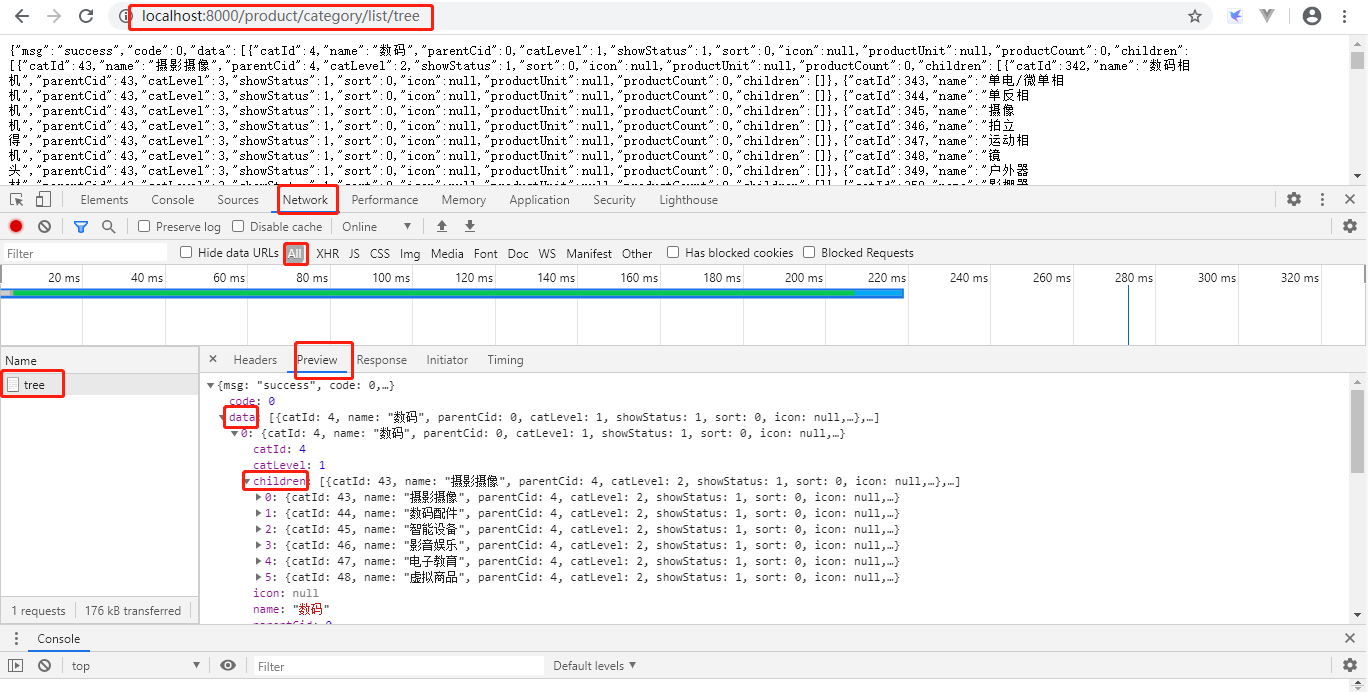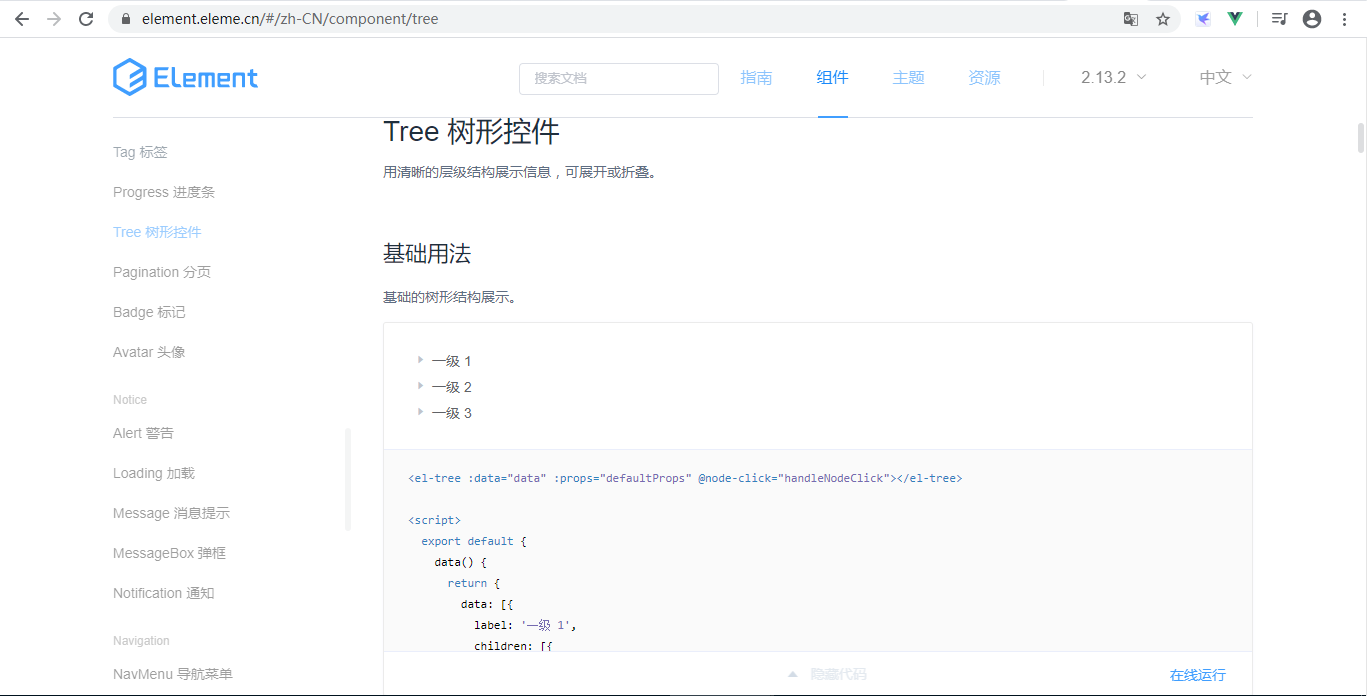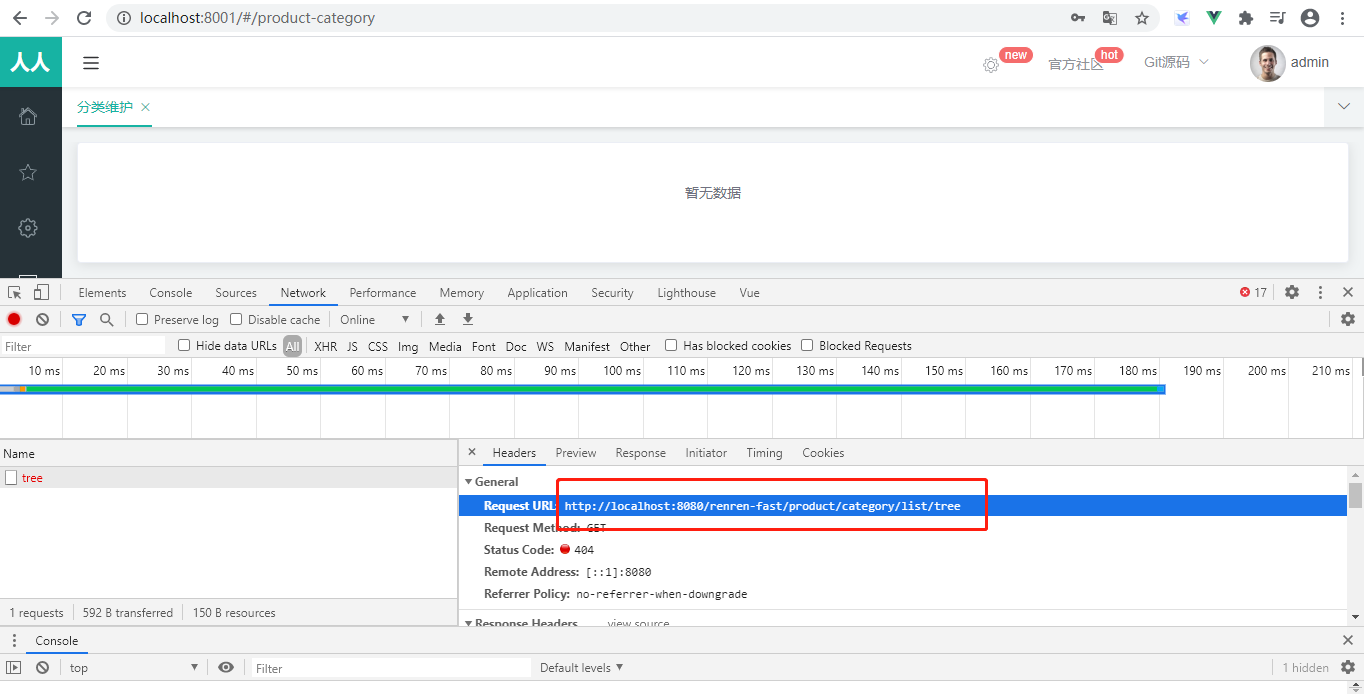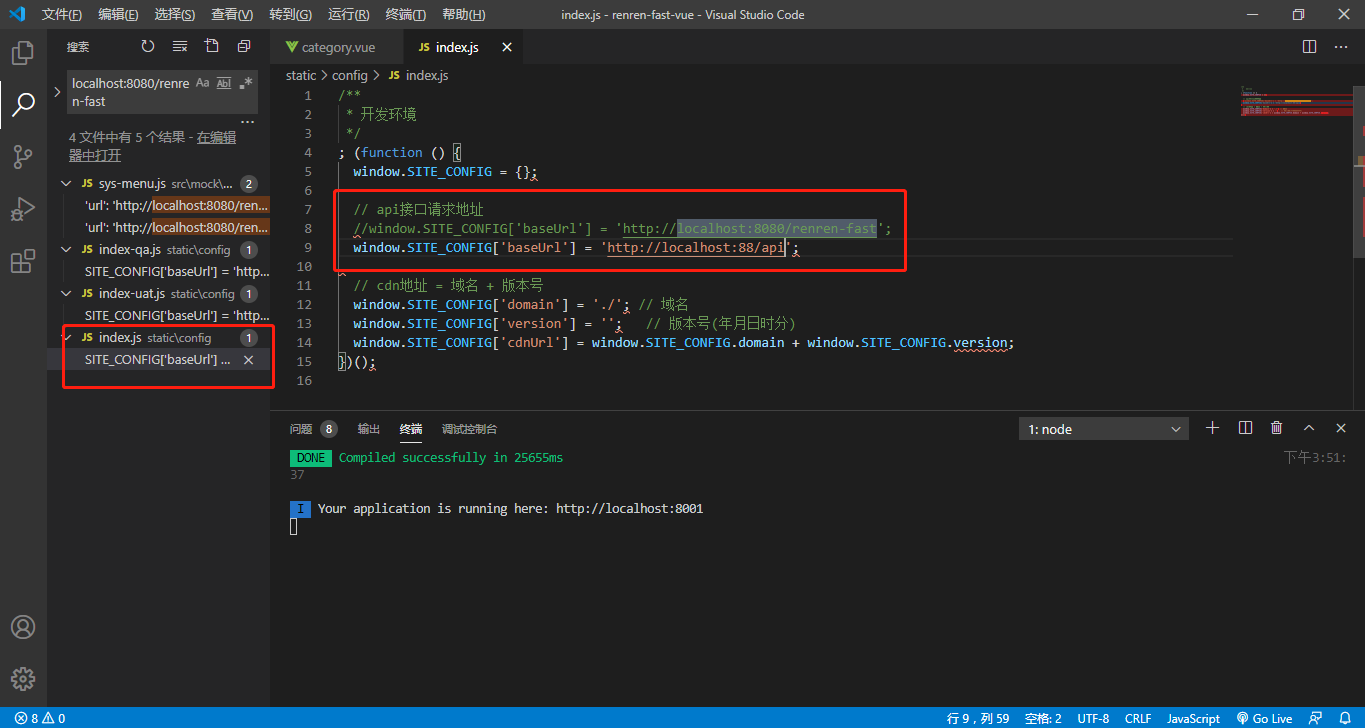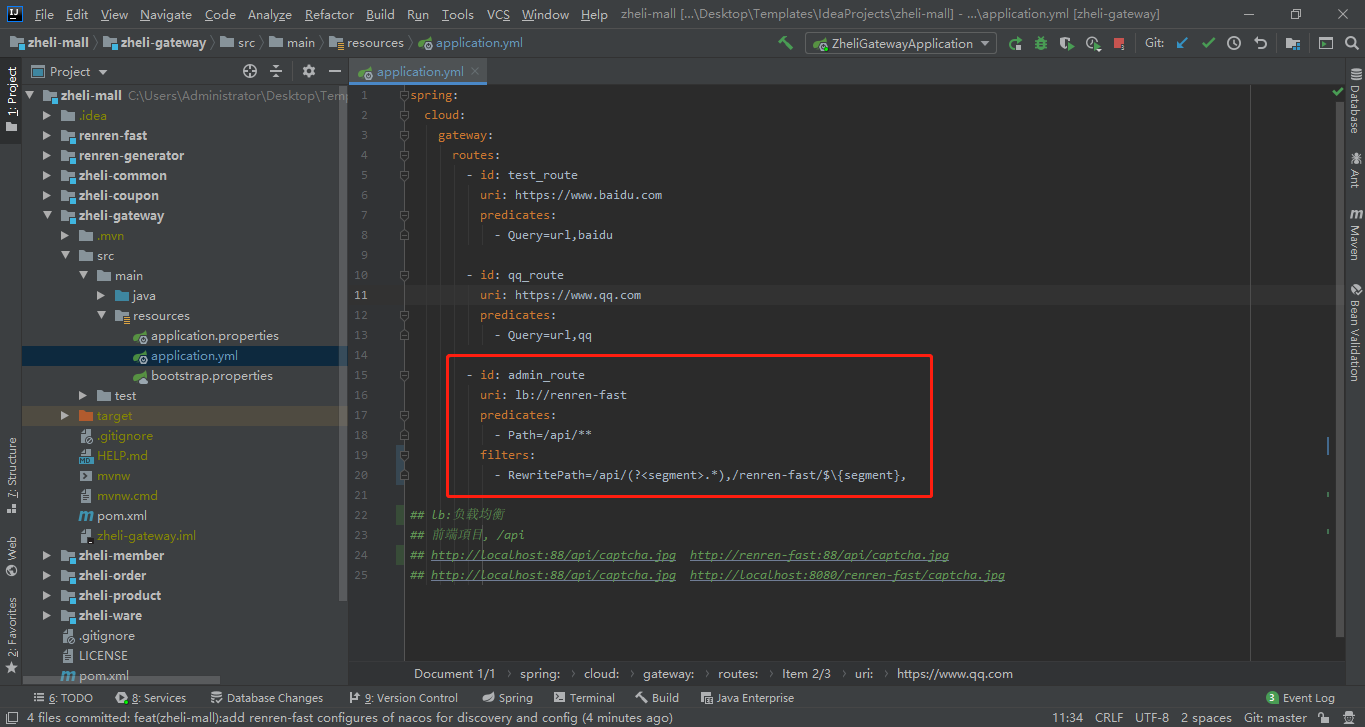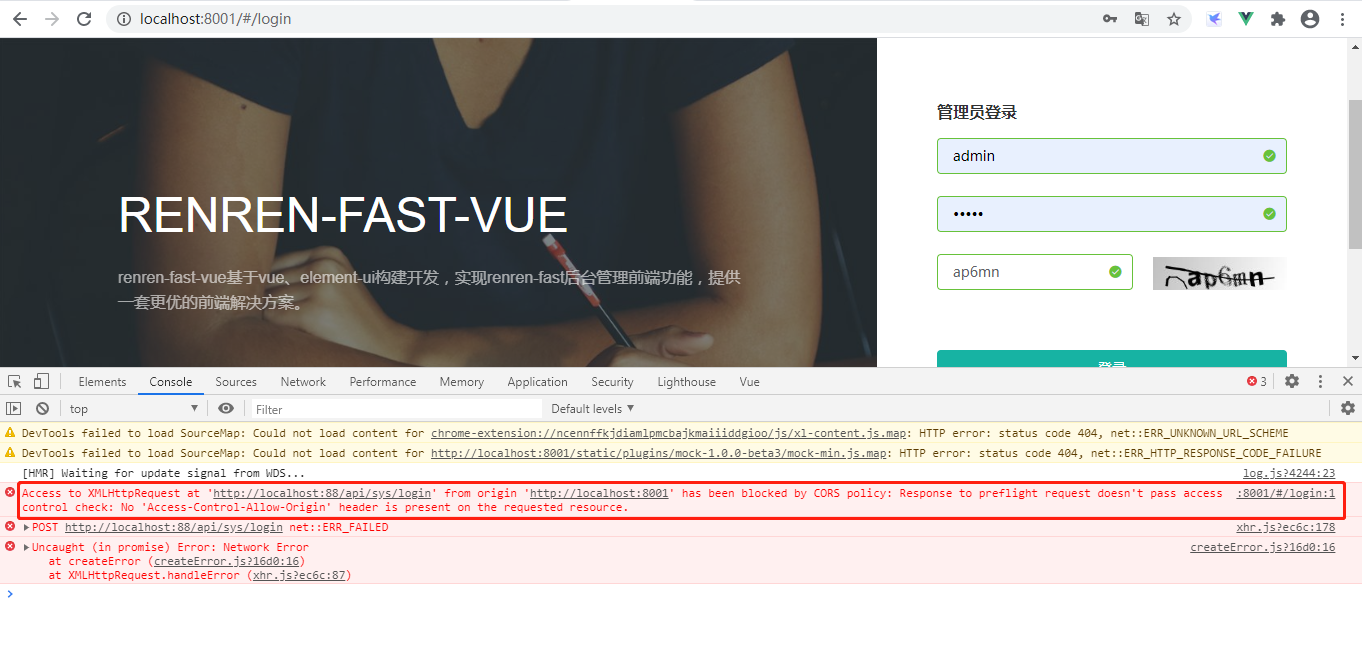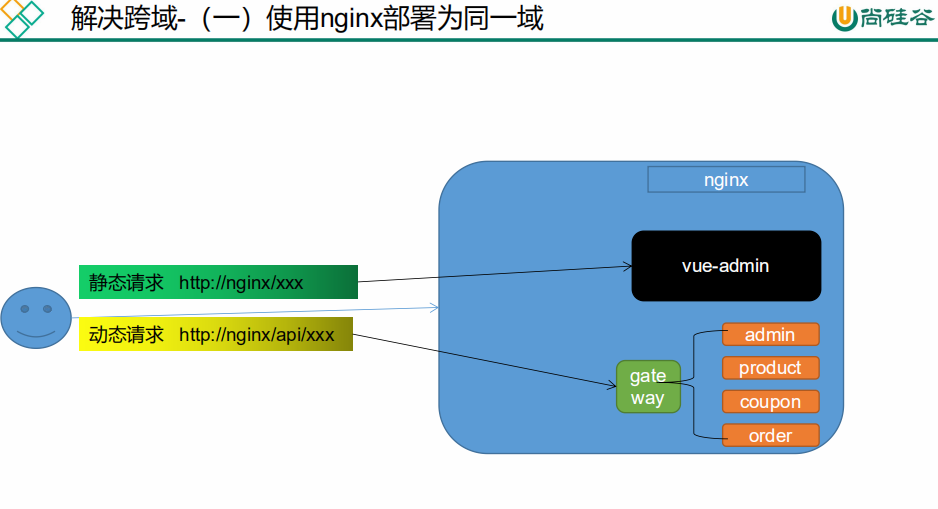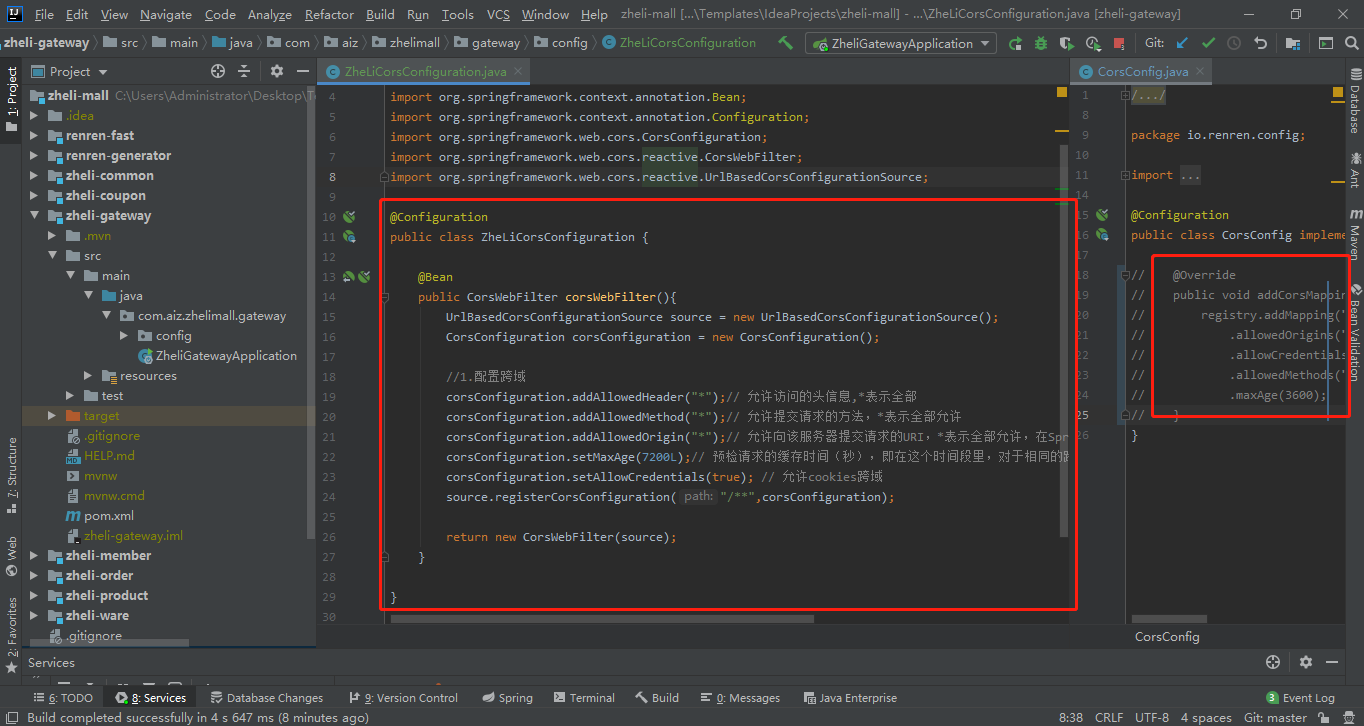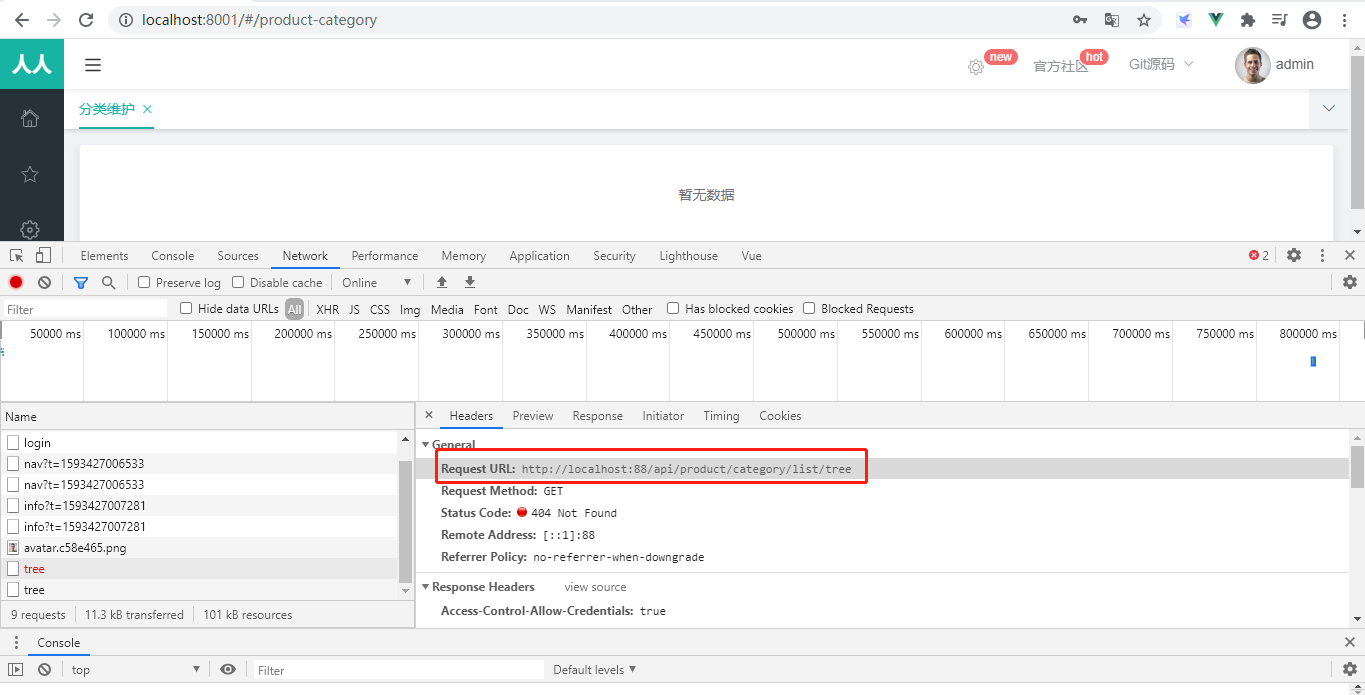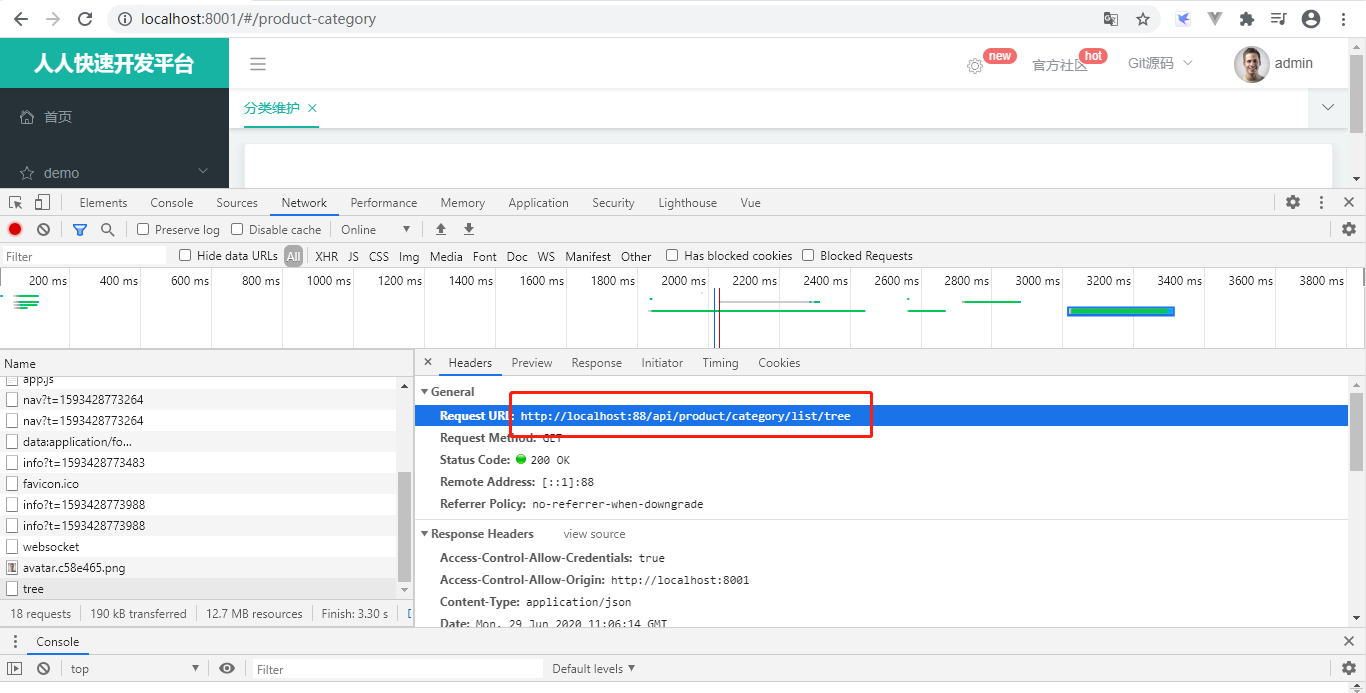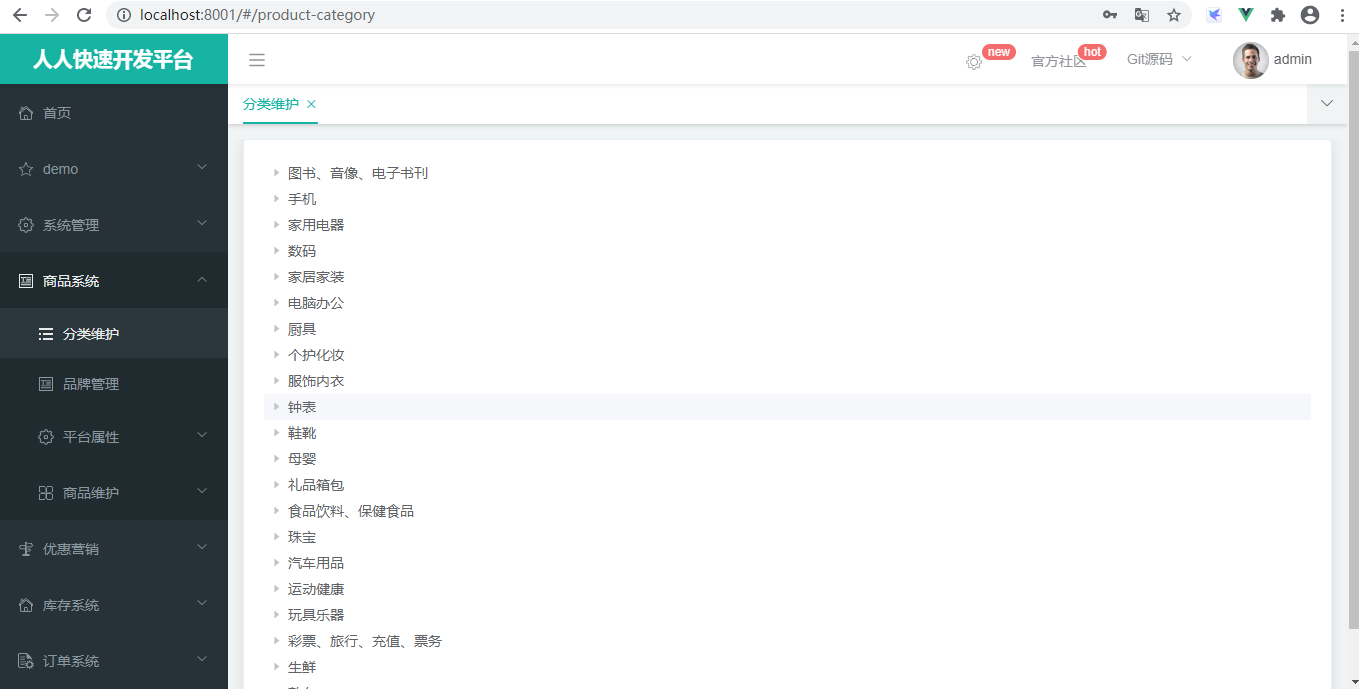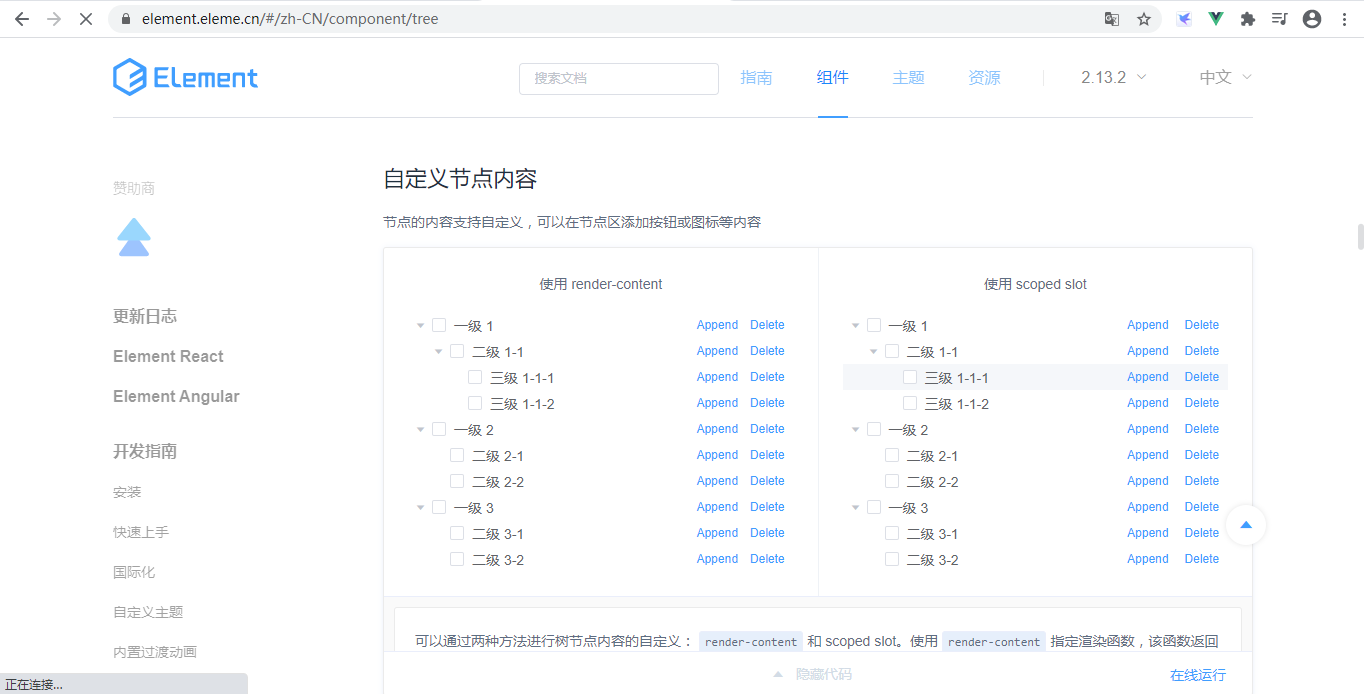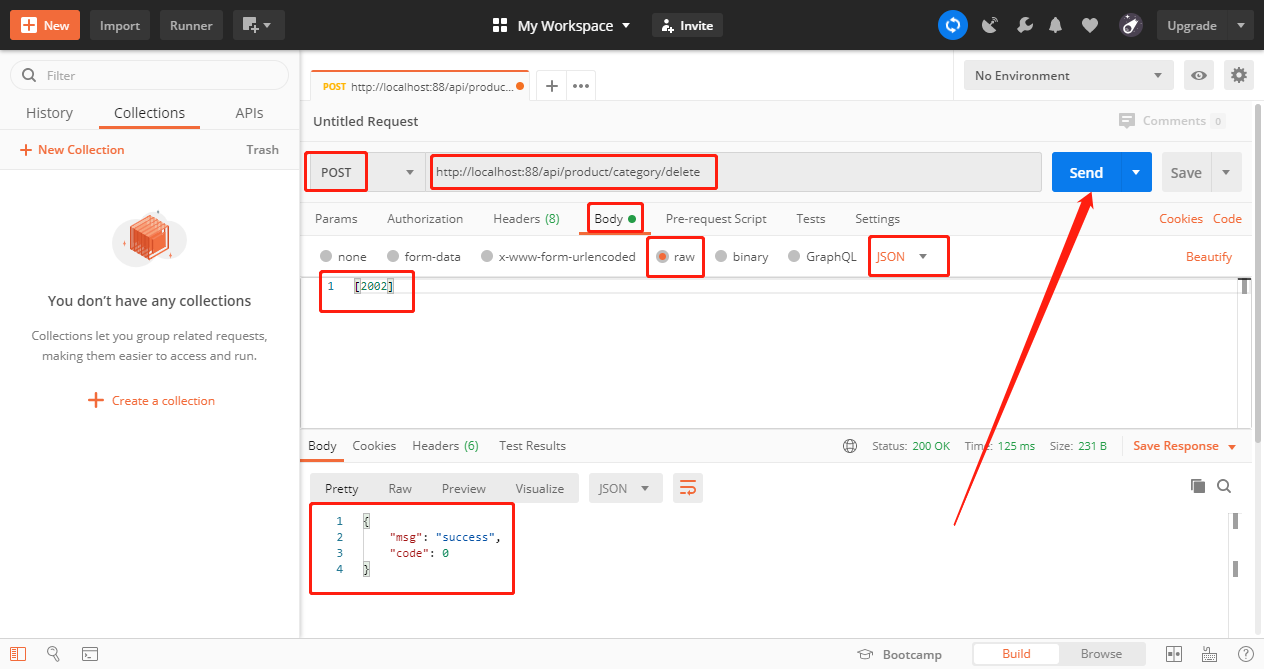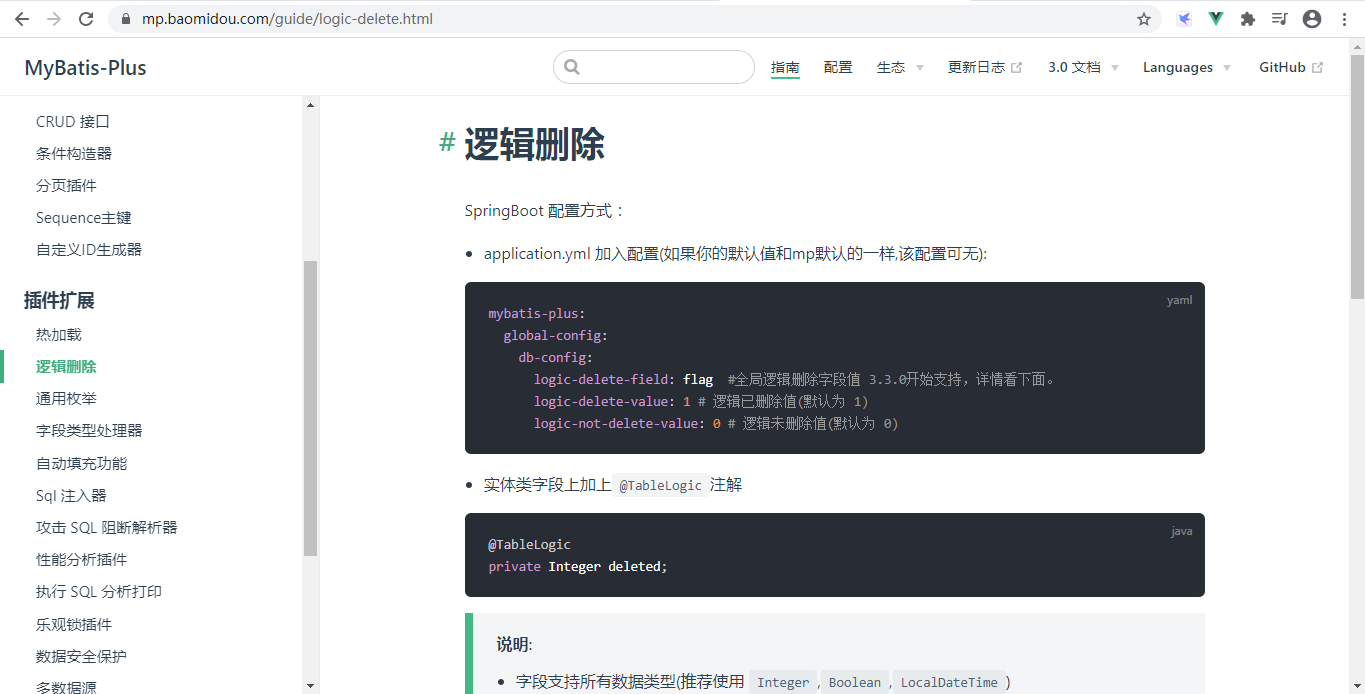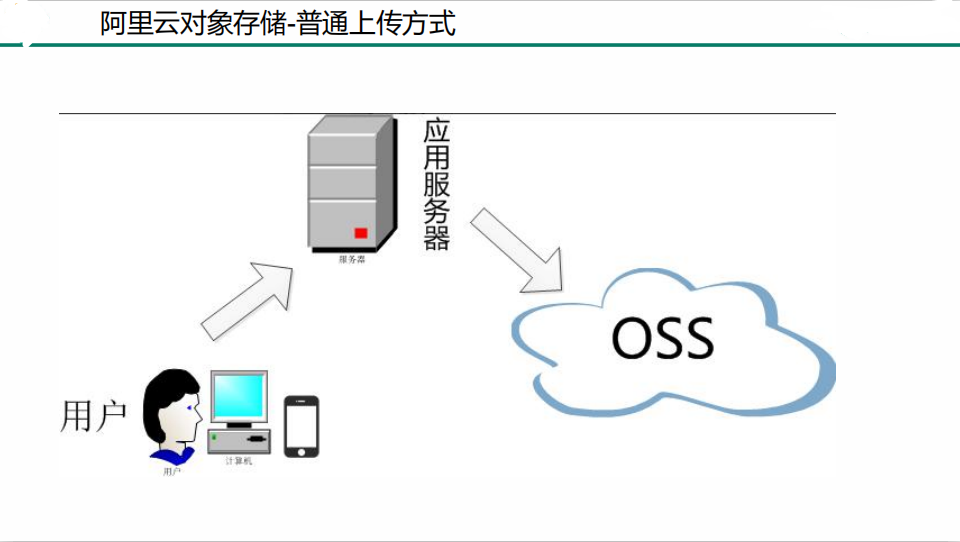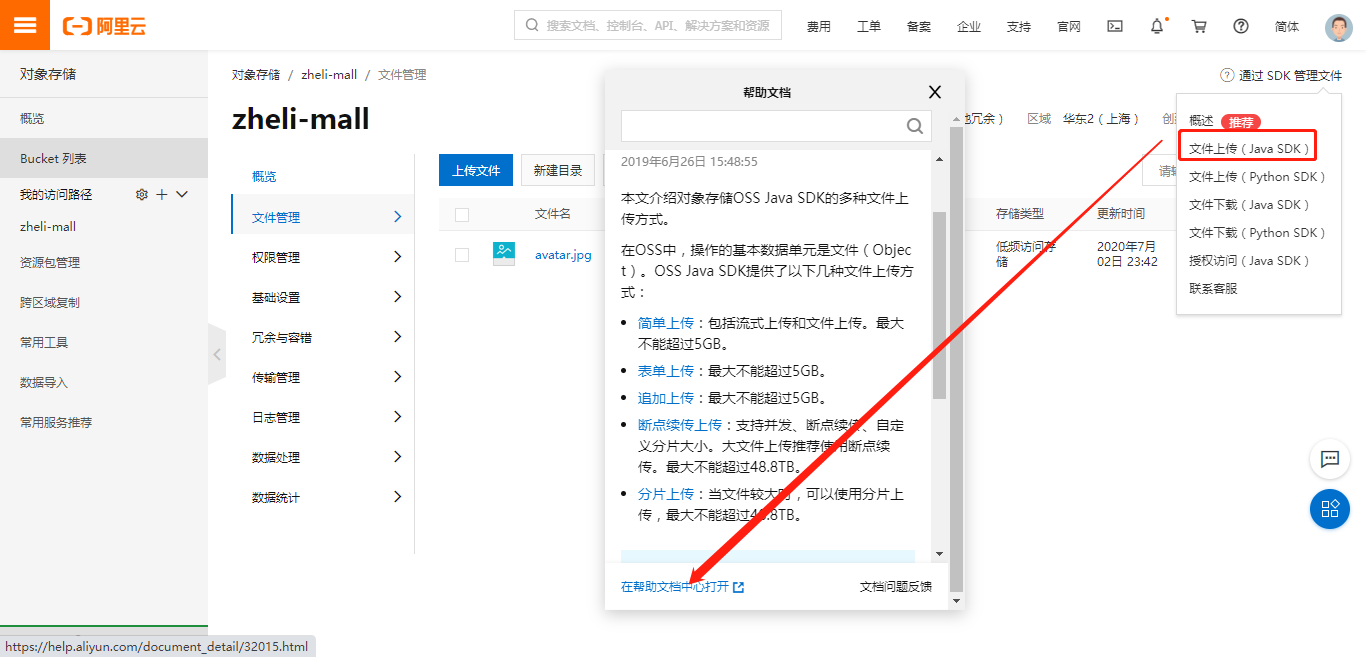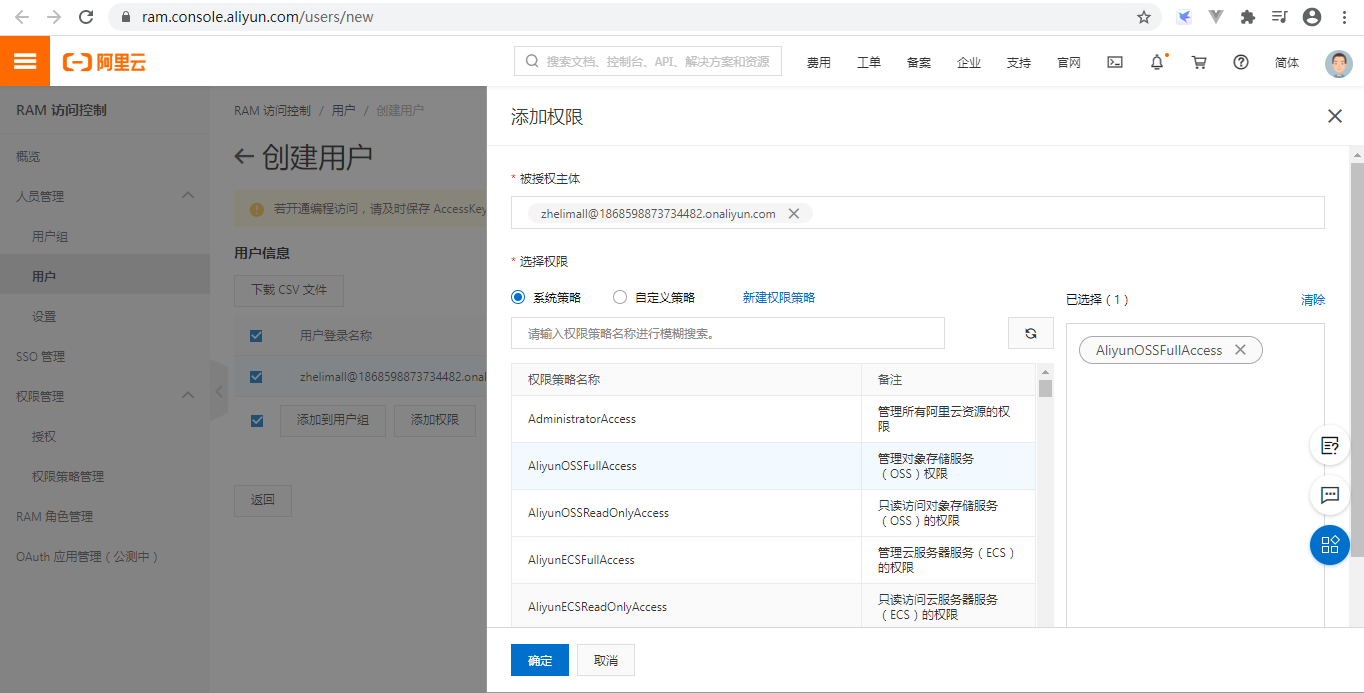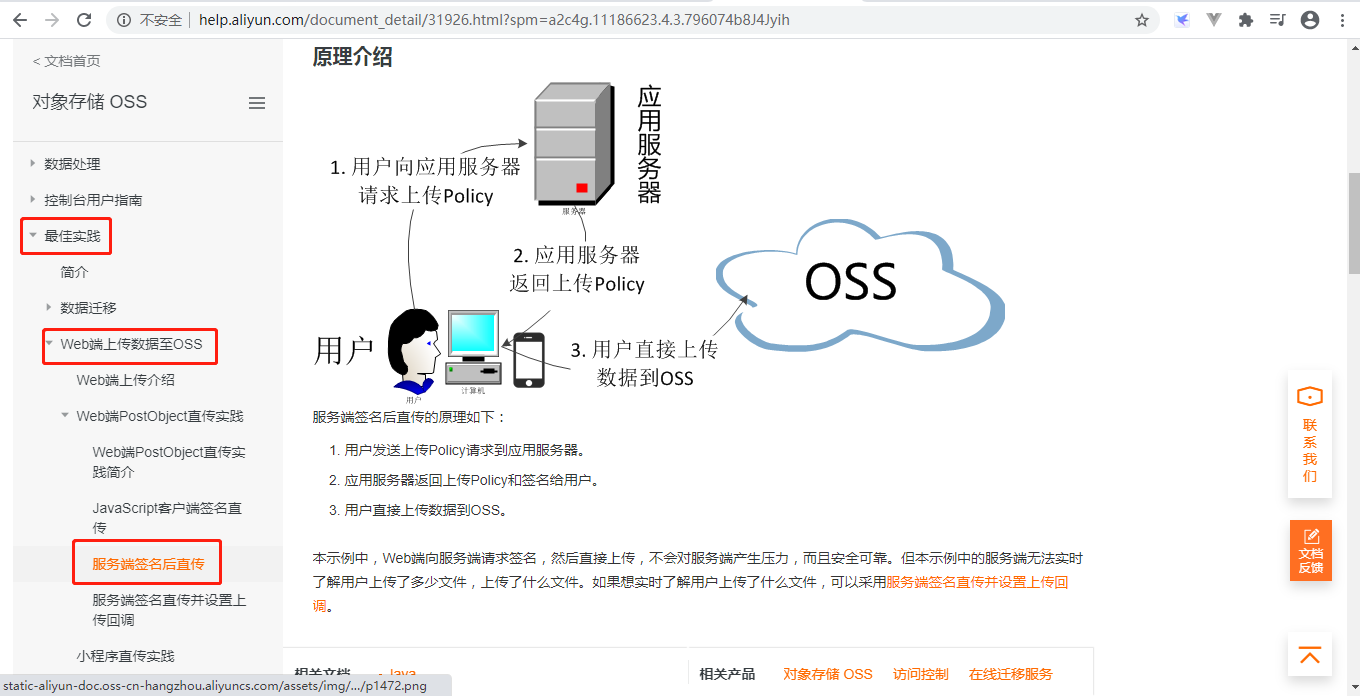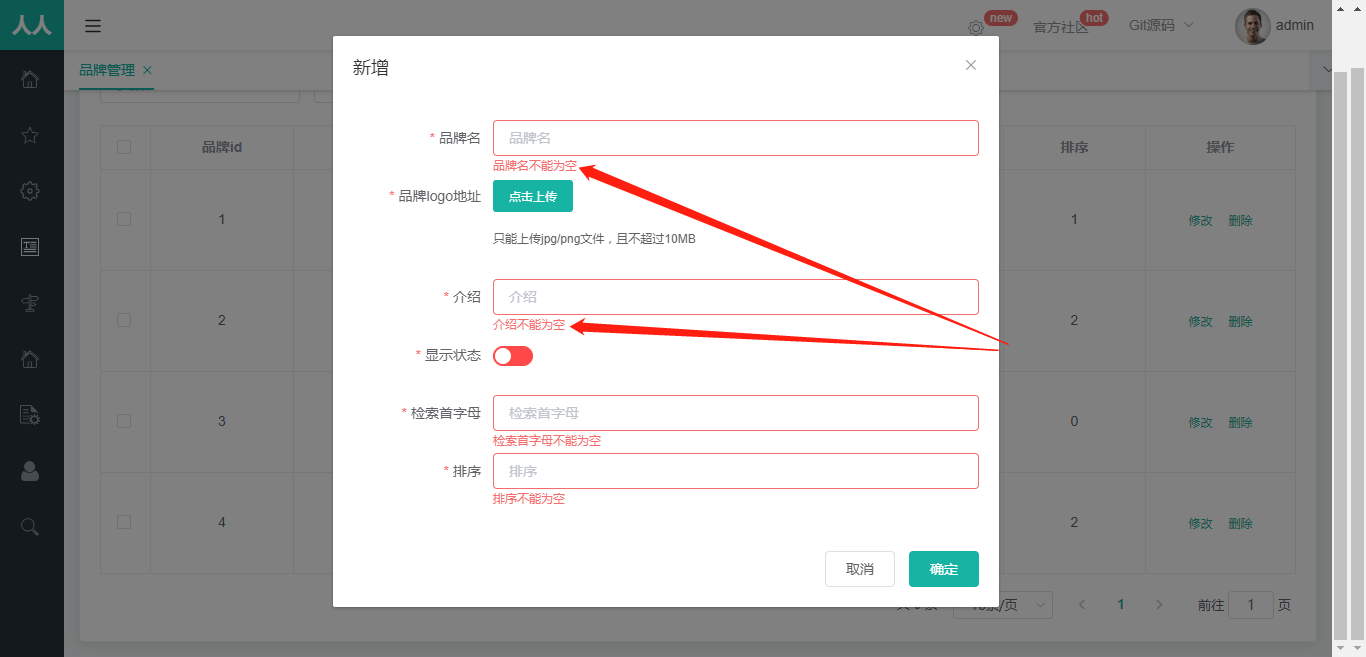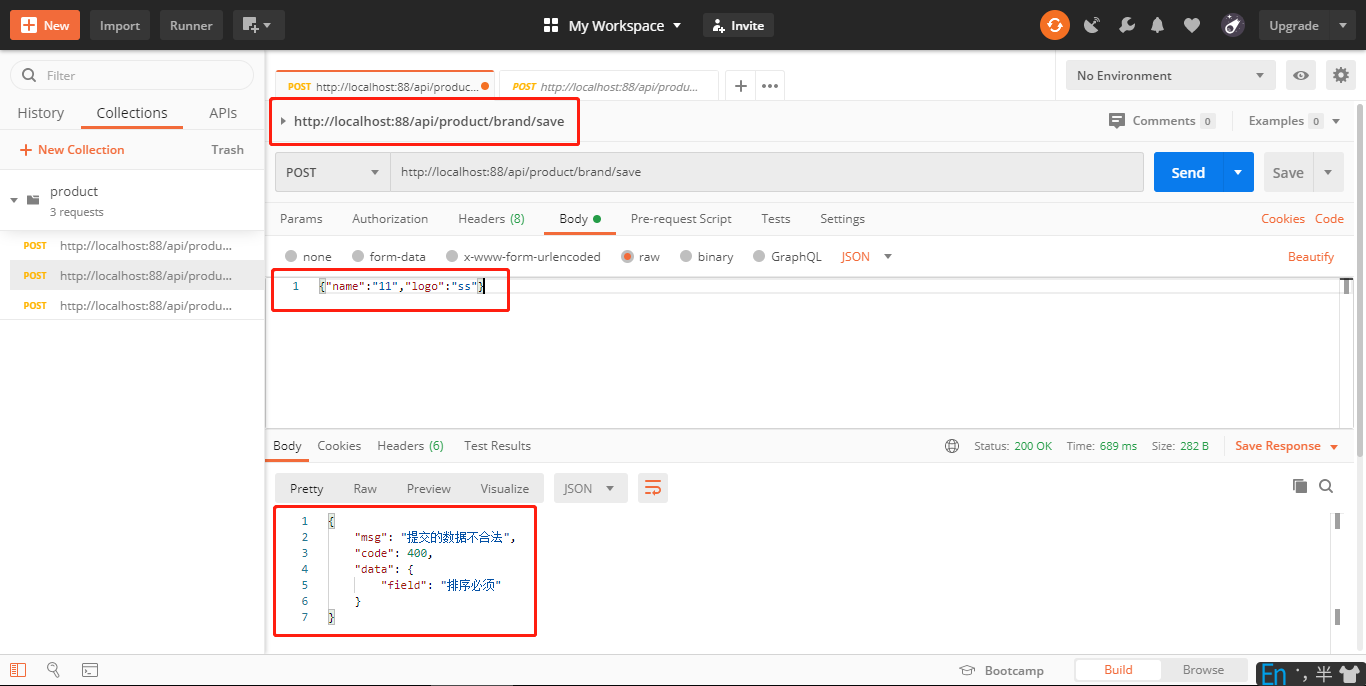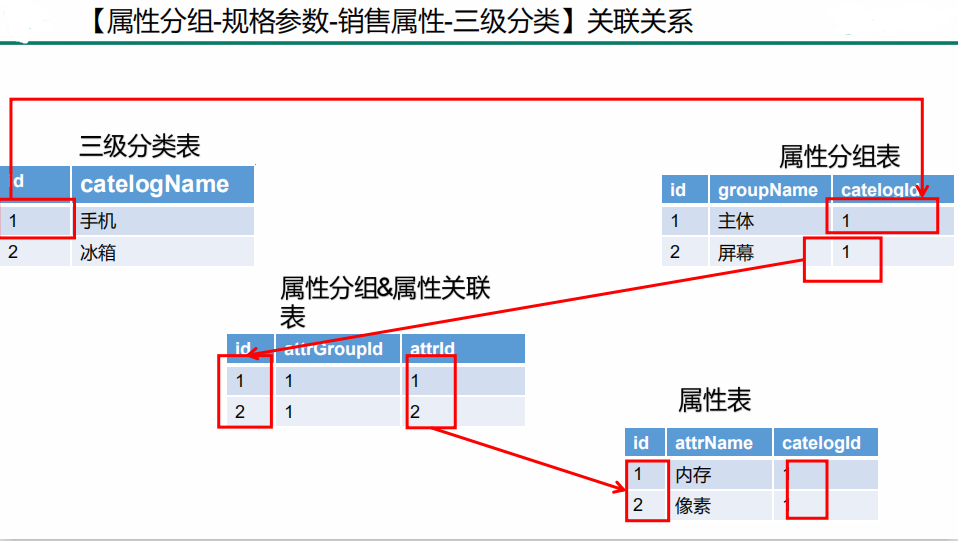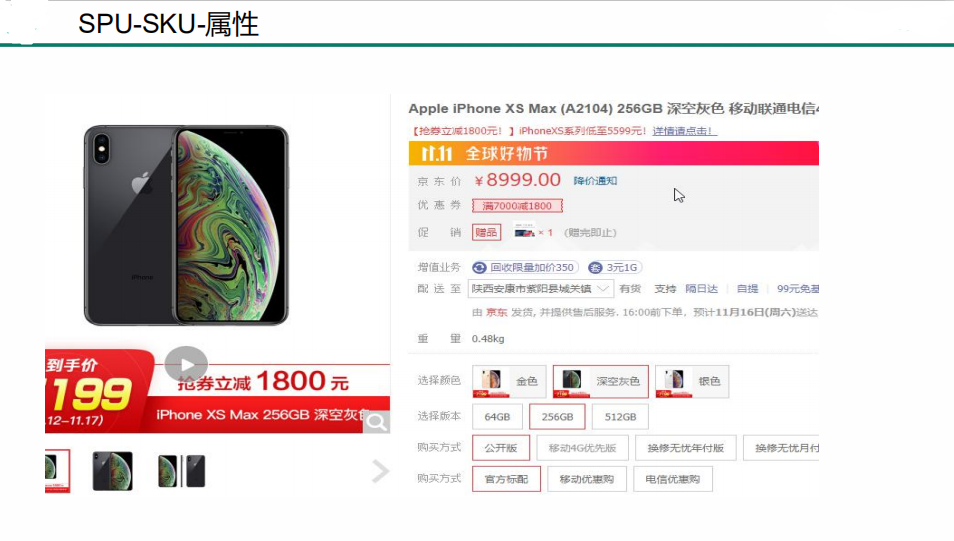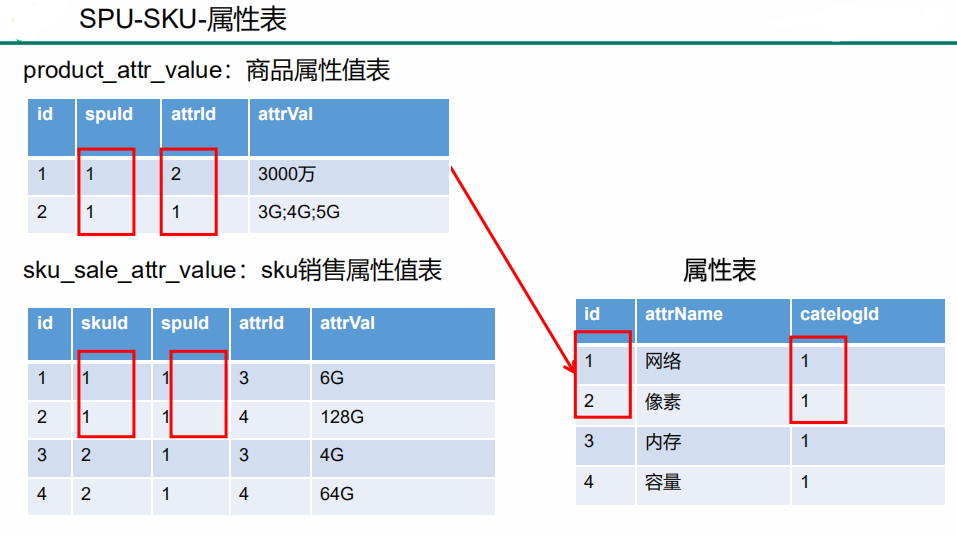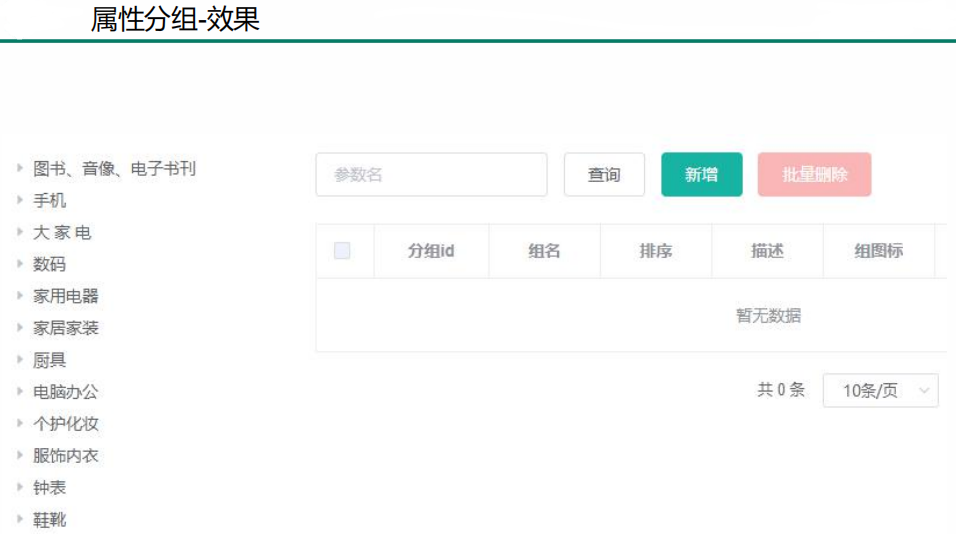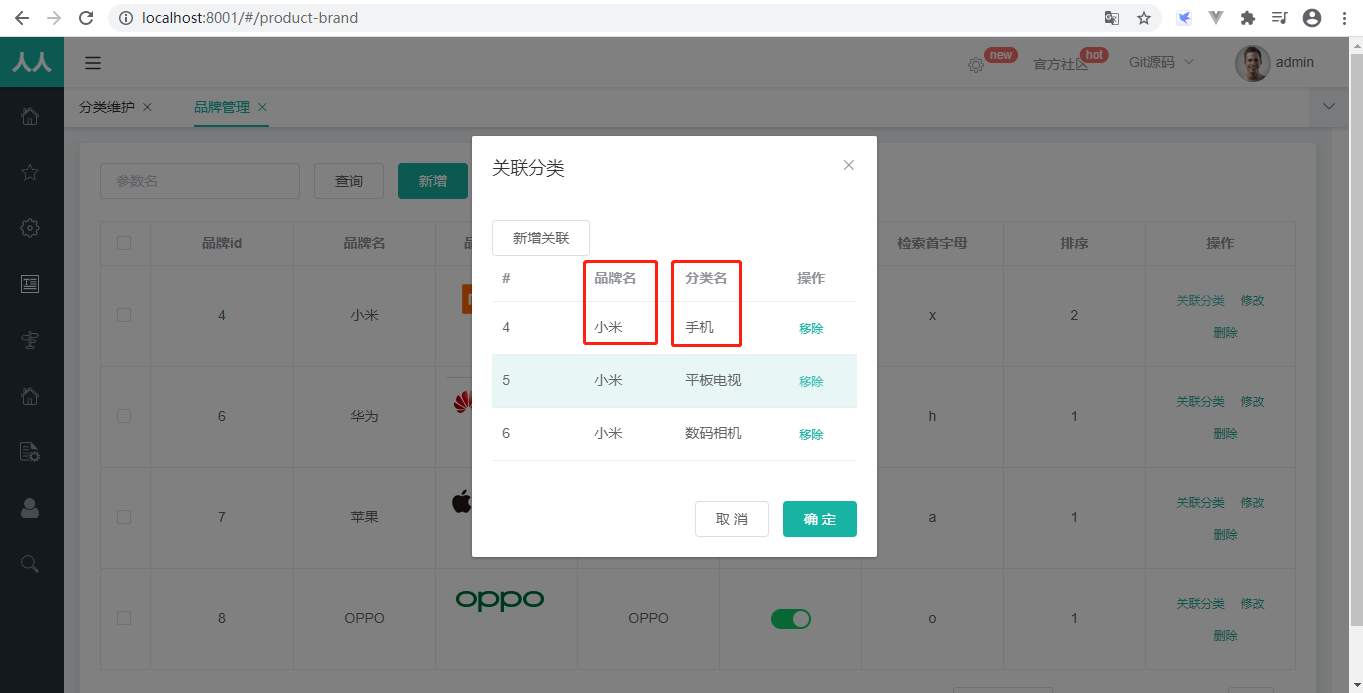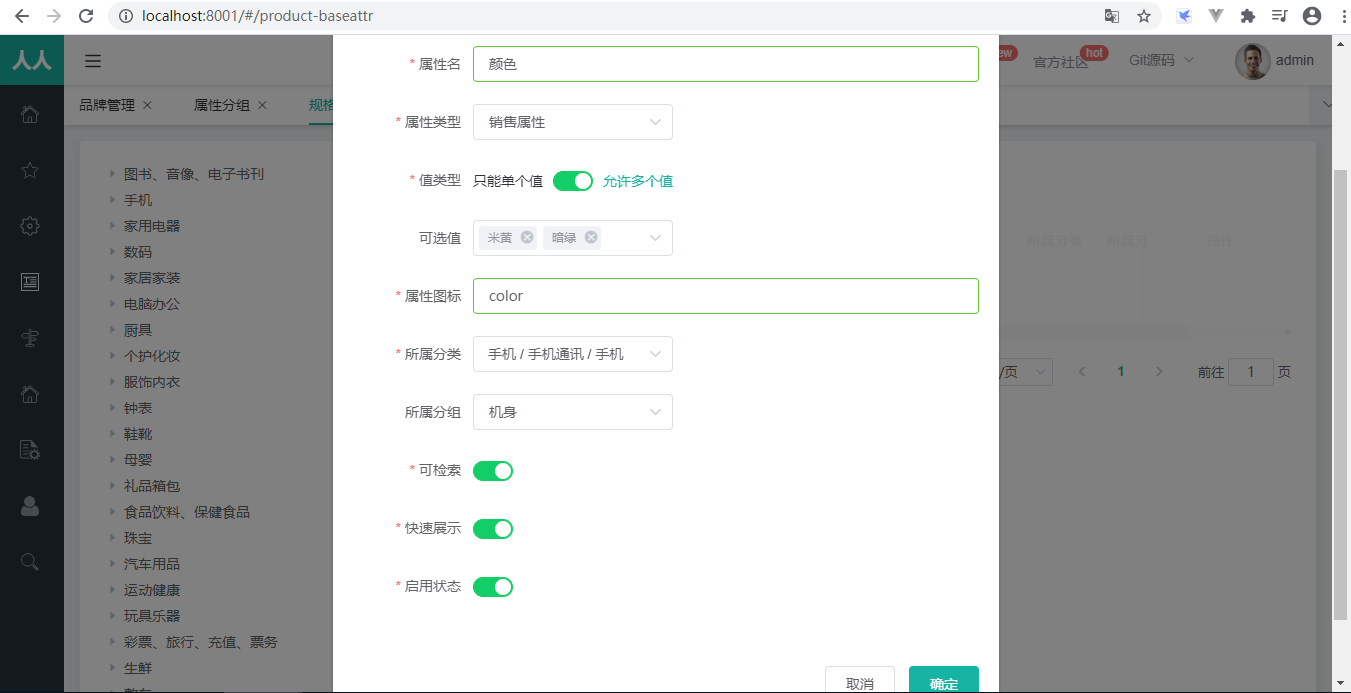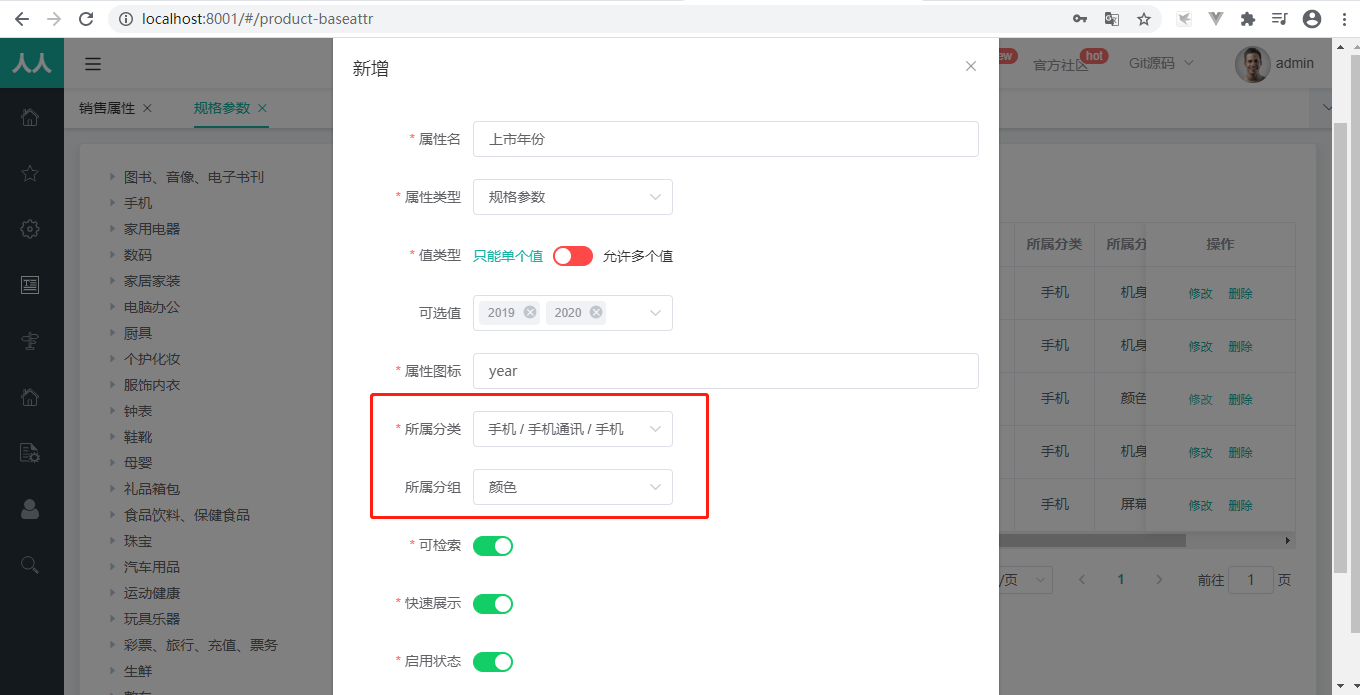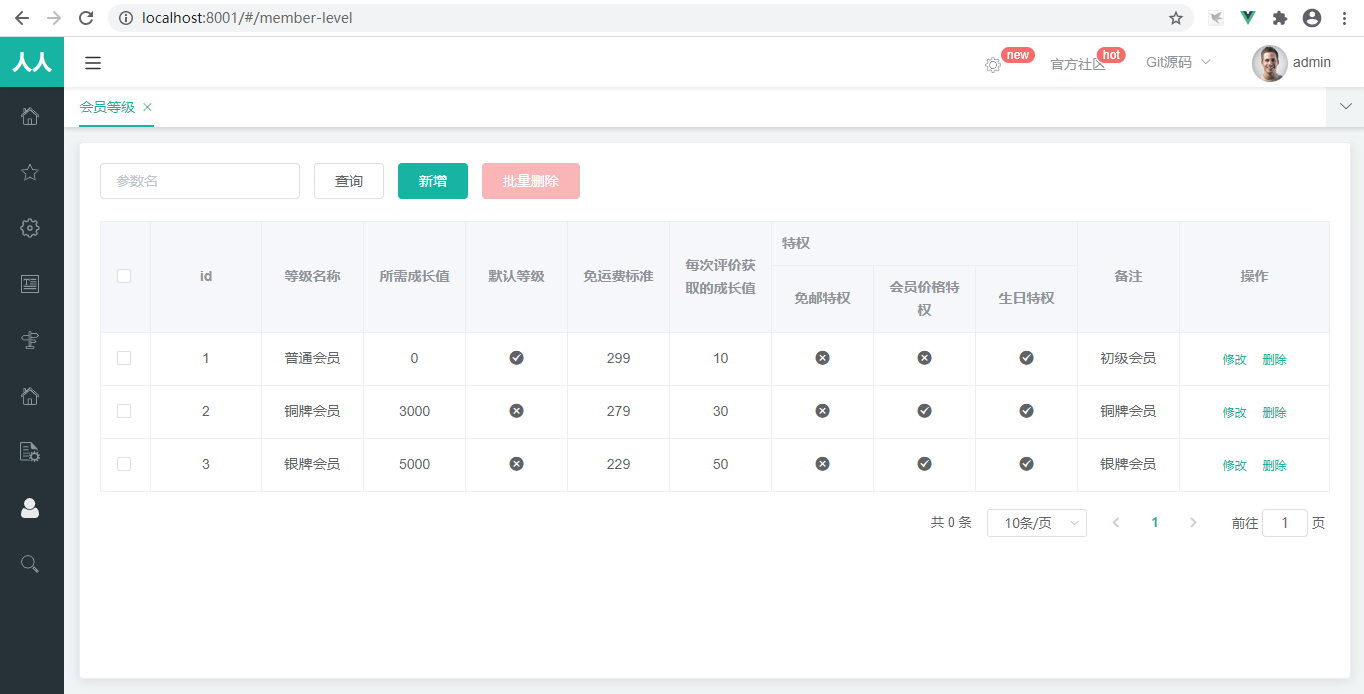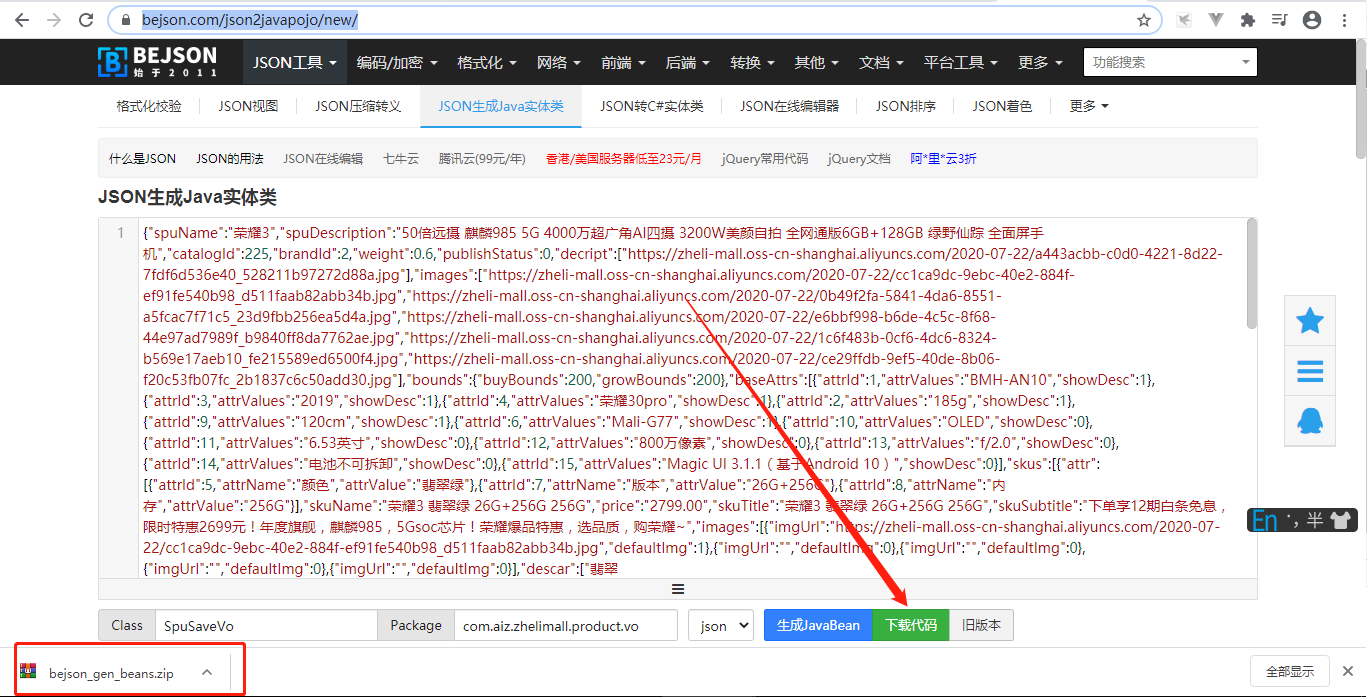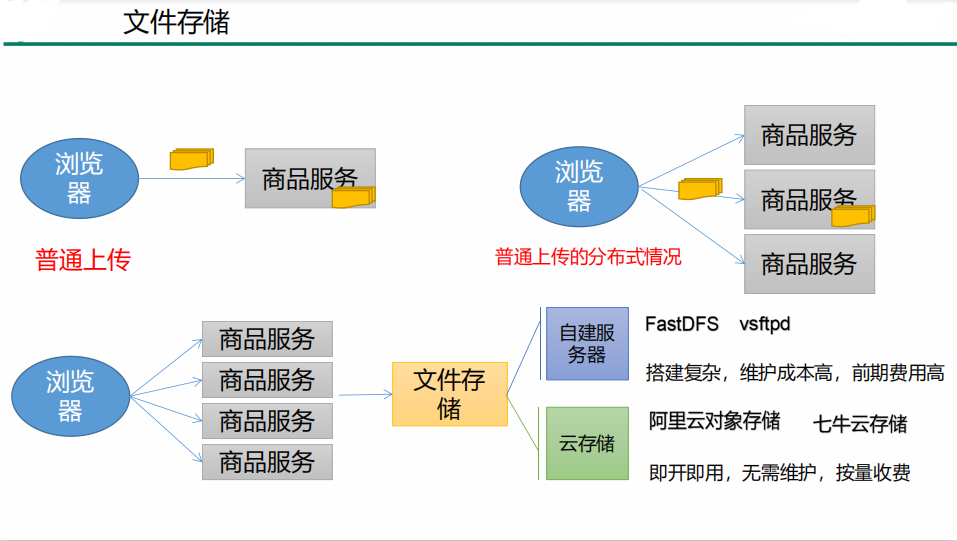【摘要】商品服务API接口~
前言 商品服务-API-三级分类-查询-递归树形结构数据获取 所有的分类数据从数据库读取,对应数据库pms_category。
1 2 3 4 5 6 7 8 9 10 11 12 13 14 15 16 17 18 @RestController @RequestMapping ("product/category" )public class CategoryController @Autowired private CategoryService categoryService; @RequestMapping ("/list/tree" ) public R list (@RequestParam Map<String, Object> params) List<CategoryEntity> entities = categoryService.listWithTree(); return R.ok().put("data" ,entities); } }
Service
1 2 3 4 5 6 7 public interface CategoryService extends IService <CategoryEntity > List<CategoryEntity> listWithTree () ; }
ServiceImpl
1 2 3 4 5 6 7 8 9 10 11 12 13 14 15 16 17 18 19 20 21 22 23 24 25 26 27 28 29 30 31 32 33 34 35 36 37 38 39 40 41 42 43 44 45 46 47 48 49 50 @Service ("categoryService" )public class CategoryServiceImpl extends ServiceImpl <CategoryDao , CategoryEntity > implements CategoryService @Override public PageUtils queryPage (Map<String, Object> params) IPage<CategoryEntity> page = this .page( new Query<CategoryEntity>().getPage(params), new QueryWrapper<CategoryEntity>() ); return new PageUtils(page); } @Override public List<CategoryEntity> listWithTree () List<CategoryEntity> entities = baseMapper.selectList(null ); List<CategoryEntity> level1Menus = entities.stream().filter(categoryEntity -> categoryEntity.getParentCid() == 0 ).map((menu) -> { menu.setChildren(getChildrens(menu, entities)); return menu; }).sorted((menu1, menu2) -> { return (menu1.getSort()==null ?0 :menu1.getSort()) - (menu2.getSort()==null ?0 :menu2.getSort()); }).collect(Collectors.toList()); return level1Menus; } private List<CategoryEntity> getChildrens (CategoryEntity root, List<CategoryEntity> all) List<CategoryEntity> children = all.stream().filter(categoryEntity -> { return categoryEntity.getParentCid() == root.getCatId(); }).map(categoryEntity -> { categoryEntity.setChildren(getChildrens(categoryEntity, all)); return categoryEntity; }).sorted((menu1, menu2) -> { return (menu1.getSort()==null ?0 :menu1.getSort()) - (menu2.getSort()==null ?0 :menu2.getSort()); }).collect(Collectors.toList()); return children; } }
测试运行。
商品服务-API-三级分类-配置网关路由和路径重写 启动人人快速开发平台。在菜单管理新建商品系统目录,并在商品系统目录下新建分类维护菜单。https://element.eleme.cn/#/zh-CN/component/tree
1 2 3 4 5 6 7 8 9 10 11 12 13 14 15 16 17 18 19 20 21 22 23 24 25 26 27 28 29 30 31 32 33 34 35 36 <template> <el-tree :data="data" :props="defaultProps" @node-click="handleNodeClick" ></el-tree> </ template><script> export default { components: {}, data() { return { data: [], defaultProps: { children: "children" , label: "label" } }; }, methods: { handleNodeClick(data) { console .log(data); }, getMenus() { this .$http({ url: this .$http.adornUrl("/product/category/list/tree" ), method: "get" }).then(data => console .log("成功获取到菜单数据..." ,data) }); } }, created() { this .getMenus(); } }; </script> <style lang='scss' scoped> </ style>
页面访问发现没有数据,打开浏览器控制台发现404。发现这里是对http://localhost:8080/renren-fast/product/category/list/tree进行请求获取数据。实际上,需要从http://localhost:8000/product/category/list/tree获取数据。http://localhost:8080/renren-fast/这部分基准路径,那么后面分布式情况下需要给8001``8002``...发送请求就还会出现问题。所以找到前端基准路径设置成给网关发请求。
商品服务-API-三级分类-网关统一配置跨域
商品服务-API-三级分类-查询-树形展示三级分类数据 进入分类维护页面的获取数据请求仍然是404。所以需要在网关服务中添加商品服务的网关路由和路径重写。
1 2 3 4 5 6 7 8 9 10 11 12 13 14 15 16 17 18 19 20 21 22 23 24 25 26 27 28 29 30 31 32 33 34 35 36 37 <template> <el-tree :data="menus" :props="defaultProps" @node-click="handleNodeClick" ></el-tree> </ template><script> export default { components: {}, data() { return { menus: [], defaultProps: { children: "children" , label: "name" } }; }, methods: { handleNodeClick(data) { console .log(data); }, getMenus() { this .$http({ url: this .$http.adornUrl("/product/category/list/tree" ), method: "get" }).then(({data} )=> { console .log("成功获取到菜单数据..." ,data.data) this .menus = data.data; }); } }, created() { this .getMenus(); } }; </script> <style lang='scss' scoped> </ style>
效果展示:
商品服务-API-三级分类-删除-页面效果 使用 scoped slot。
1 2 3 4 5 6 7 8 9 10 11 12 13 14 15 16 17 18 19 20 21 22 23 24 25 26 27 28 29 30 31 32 33 34 35 36 37 38 39 40 41 42 43 44 45 46 47 48 49 50 51 <template> <el-tree :data="menus" :props="defaultProps" @node-click="handleNodeClick" :expand-on-click-node="false" show-checkbox node-key="catId" > <span class "custom-tree-node" slot-scope="{ node, data }" > <span>{{ node.label }}</span> <span> <el-button v-if="node.level<=2" type="text" size="mini" @click="() => append(data)">Append</ el-button> <el-button v-if ="node.childNodes.length==0" type="text" size="mini" @click="() => remove(node, data)" >Delete</el-button> </ span> </span> </ el-tree></template> <script> export default { components: {}, data() { return { menus: [], defaultProps: { children: "children", label: "name" } }; }, methods: { handleNodeClick(data) { console.log(data); }, getMenus() { this.$http({ url: this.$http.adornUrl("/ product/category/list/tree"), method: " get " }).then(({ data }) => { console .log("成功获取到菜单数据..." , data.data); this .menus = data.data; }); }, append(data) { console .log("append" , data); }, remove(node, data) { console .log("remove" , node, data); } }, created() { this .getMenus(); }, }; </script> <style lang='scss' scoped> </ style>
商品服务-API-三级分类-删除-逻辑删除 下载安装Postman https://www.postman.com/downloads/
使用mybatis逻辑删除。
商品服务-API-三级分类-删除-逻辑删除 商品服务-API-三级分类-删除-删除效果细化 商品服务-API-三级分类-新增-新增效果完成 商品服务-API-三级分类-修改-基本修改效果完成 商品服务-API-三级分类-修改-拖拽效果 商品服务-API-三级分类-修改-拖拽数据收集 商品服务-API-三级分类-修改-拖拽功能完成 商品服务-API-三级分类-修改-批量拖拽效果 商品服务-API-三级分类-删除-批量删除&小结 商品服务-API-品牌管理-使用逆向工程的前后端代码 商品服务-API-品牌管理-效果优化与快速显示开关 商品服务-API-品牌管理-云存储开通与使用 SpringCloud-Alibaba-OSS
简介
这个是对象存储的页面。
商品服务-API-品牌管理-OSS整合测试 使用代码给阿里云OSS中的zheli-mall上传图片。https://ram.console.aliyun.com 创建RAM账号。
首先我们创建一个工程,这个工程专门用来集成第三方应用的工程,我起名叫zhelimall-third-party。
1 2 3 4 5 <dependency > <groupId > com.alibaba.cloud</groupId > <artifactId > spring-cloud-starter-alicloud-oss</artifactId > </dependency >
2.配置key,endpoint相关信息
1 2 3 4 5 6 7 8 9 10 11 12 13 spring: cloud: nacos: discovery: server-addr: 127.0 .0 .1 :8848 alicloud: access-key: LTAI4GAGUKKkE4agXXXXXXxX secret-key: ggruUCv4r9juD8QkmBXXXXXxxXXXX oss: endpoint: oss-cn-shanghai.aliyuncs.com bucket: zheli-mall application: name: zheli-third-party
3.使用OSSClient 进行相关操作
商品服务-API-品牌管理-OSS获取服务端签名
编写代码:OssController.javahttp://localhost:30000/oss/policy http://localhost:88/api/thirdparty/oss/policy
商品服务-API-品牌管理-OSS前后联调测试上传 Element-UI中的
商品服务-API-品牌管理-表单校验&自定义校验器 前端校验方法
商品服务-API-品牌管理-JSR303数据校验 后端校验方法
1 2 3 4 5 6 7 8 9 10 11 12 13 14 15 16 17 18 19 20 21 22 23 24 25 26 27 28 29 30 31 32 33 34 35 36 37 38 39 40 41 42 43 44 45 46 47 48 49 50 51 52 53 54 55 56 @Data @TableName ("pms_brand" )public class BrandEntity implements Serializable private static final long serialVersionUID = 1L ; @NotNull (message = "修改必须指定品牌id" ) @Null (message = "新增不能指定id" ) @TableId private Long brandId; @NotBlank (message = "品牌名必须提交" ) private String name; @NotBlank @URL (message = "logo必须是一个合法的url地址" ) private String logo; private String descript; @NotNull private Integer showStatus; @NotEmpty @Pattern (regexp = "/^[a-zA-z]$/" ,message = "检索首字母必须是一个字母" ) private String firstLetter; @NotNull @Min (value = 0 ,message = "排序必须大于等于0" ) private Integer sort; }
BrandController.java
1 2 3 4 5 6 7 8 9 10 11 12 13 14 15 16 17 18 @RequestMapping ("/save" )public R save (@Valid @RequestBody BrandEntity brand, BindingResult result) if (result.hasErrors()) { Map<String, String> map = new HashMap<>(); result.getFieldErrors().forEach((item) -> { String defaultMessage = item.getDefaultMessage(); String field = item.getField(); map.put("field" , defaultMessage); }); return R.error(400 , "提交的数据不合法" ).put("data" , map); } else { brandService.save(brand); return R.ok(); } }
使用PostMan测试。
商品服务-API-品牌管理-统一异常处理
@ResponseBody + @ControllerAdvice
错误码BizCodeEnum.java
1 2 3 4 5 6 7 8 9 10 11 12 13 14 15 16 17 18 19 20 public enum BizCodeEnum { UNKNOW_EXCEPTION(10000 ,"系统未知异常" ), VAILD_EXCEPTION(10001 ,"参数格式校验失败" ); private int code; private String msg; BizCodeEnum(int code, String msg) { this .code = code; this .msg = msg; } public int getCode () return code; } public String getMsg () return msg; } }
集中处理所有异常ZhelimallExceptionControllerAdvice.java
1 2 3 4 5 6 7 8 9 10 11 12 13 14 15 16 17 18 19 20 21 @Slf 4j@RestControllerAdvice (basePackages = "com.aiz.zhelimall.product.controller" )public class ZhelimallExceptionControllerAdvice @ResponseBody @ExceptionHandler (value = MethodArgumentNotValidException.class ) public R handleVaildException (MethodArgumentNotValidException e ) { log.error("数据校验出现问题:{},异常类型:{}" ,e.getMessage(),e.getClass()); BindingResult bindingResult = e.getBindingResult(); Map<String,String> errorMap = new HashMap<>(); bindingResult.getFieldErrors().forEach((fieldError -> { errorMap.put(fieldError.getField(),fieldError.getDefaultMessage()); })); return R.error(BizCodeEnum.VAILD_EXCEPTION.getCode(),BizCodeEnum.VAILD_EXCEPTION.getMsg()).put("data" ,errorMap); } @ExceptionHandler (value = Throwable.class ) public R handleException () { return R.error(); } }
商品服务-API-品牌管理-JSR303分组校验
分组校验(多场景的复杂校验)
1 2 3 4 5 6 @NotEmpty (groups={AddGroup.class }) @Pattern (regexp ="^[a-zA-Z]$" ,message = "检索首字母必须是一个字母" ,groups={AddGroup.class ,UpdateGroup .class }) private String firstLetter
1 2 3 4 5 6 7 8 9 @RequestMapping ("/update" )public R update (@Validated(UpdateGroup.class) @RequestBody BrandEntity brand) brandService.updateById(brand); return R.ok(); }
商品服务-API-品牌管理-JSR303自定义校验注解 导入javax依赖
1 2 3 4 5 <dependency > <groupId > javax.validation</groupId > <artifactId > validation-api</artifactId > <version > 2.0.1.Final</version > </dependency >
自定义校验
1 2 3 4 5 6 7 8 9 10 11 12 13 14 15 @Documented @Constraint ( validatedBy = {ListValueConstraintValidator.class }//可以指定多个不同的校验器,适配不同类型的校验 ) @Target ( {ElementType.METHOD, ElementType.FIELD, ElementType.ANNOTATION_TYPE, ElementType.CONSTRUCTOR, ElementType.PARAMETER, ElementType.TYPE_USE})@Retention (RetentionPolicy.RUNTIME)public @interface ListValue { String message () default " {com.aiz.common.valid.ListValue.message}"; Class<?>[] groups() default {}; Class<? extends Payload>[] payload() default {}; int[] vals() default {}; }
配置文件ValidationMessages.properties
1 com.aiz.common.valid.ListValue.message = 必须提交指定的值
(二).编写一个自定义的校验器 ConstraintValidator
1 2 3 4 5 6 7 8 9 10 11 12 13 14 15 16 17 18 19 20 21 22 23 24 25 public class ListValueConstraintValidator implements ConstraintValidator <ListValue ,Integer > private Set<Integer> set = new HashSet<>(); @Override public void initialize (ListValue constraintAnnotation) int [] vals = constraintAnnotation.vals(); for (int val : vals){ set.add(val); } } @Override public boolean isValid (Integer value, ConstraintValidatorContext Context) return set.contains(value); } }
(三).关联自定义的校验器和自定义的校验注解
1 2 3 @Constraint( validatedBy = {ListValueConstraintValidator.class}//可以指定多个不同的校验器,适配不同类型的校验 )
使用
1 2 3 4 5 6 @NotNull (groups = {AddGroup.class , UpdateStatusGroup .class }) @ListValue (vals ={0 ,1 },groups = {AddGroup.class , UpdateStatusGroup .class }) private Integer showStatus
BrandController.java
1 2 3 4 5 6 7 8 9 @RequestMapping ("/update/status" )public R updateStatus (@Validated(UpdateStatusGroup.class) @RequestBody BrandEntity brand) brandService.updateById(brand); return R.ok(); }
检查前端接口调用。
商品服务-概念-SPU&SKU&规格参数&销售属性 SPU和SKU SPU:Standard Product Unit(标准化产品单元)
基本属性【规格参数】与销售属性 每个分类下的商品共享规格参数,与销售属性。只是有些商品不一定要用这个分类下全部属性。
属性是以三级分类组织起来的
规格参数中有些是可以提供检索的
规格参数也是基本属性,他们具有自己的价值
属性的分组也是以三级分类组织起来的
属性名确定的,但是值是每一个商品不同来决定的
商品服务-API-属性分组-前端组件抽取&父子组件交互
父子组件传递数据
抽取子组件../common/category.vue
1 2 3 4 5 6 7 8 9 10 11 12 13 14 15 16 17 18 19 20 21 22 23 24 25 26 27 <template > <el-tree :data ="menus" :props ="defaultProps" node-key ="catId" ref ="menuTree" @node-click ="nodeclick" > </el-tree > </template > <script > export default { data() { return { menus: [], expandedKey: [], defaultProps: { children: "children" , label: "name" } }; }, methods: { nodeclick(data, node, component) { console .log("子组件category的节点被点击" , data, node, component); this .$emit("tree-node-click" , data, node, component); } } }; </script > <style scoped > </style >
父组件/product/attrgroup.vue
1 2 3 4 5 6 7 8 9 10 11 12 13 14 15 16 17 18 19 20 21 22 23 <template > <div > <category @tree-node-click ="treenodeclick" > </category > </div > </template > <script > import Category from "../common/category" ;export default { methods: { treenodeclick(data, node, component) { console .log("attrgroup感知到category的节点被点击" ,data, node, component); console .log("刚才被点击的菜单id:" ,data.catId); if (node.level == 3) { this .catId = data.catId; this .getDataList(); } }, } </script > }<style scoped > </style >
商品服务-API-属性分组-获取分类属性分组 接口文档:https://easydoc.xyz/s/78237135/ZUqEdvA4/hKJTcbfd
AttrGroupController.java
1 2 3 4 5 6 7 @RequestMapping ("/list/{catelogId}" )public R list (@RequestParam Map<String, Object> params, @PathVariable("catelogId" ) Long catelogId) PageUtils page = attrGroupService.queryPage(params,catelogId); return R.ok().put("page" , page); }
AttrGroupServiceImpl.java
1 2 3 4 5 6 7 8 9 10 11 12 13 14 15 16 17 18 19 20 21 22 23 24 @Override public PageUtils queryPage (Map<String, Object> params, Long catelogId) if (catelogId == 0 ) { IPage<AttrGroupEntity> page = this .page( new Query<AttrGroupEntity>().getPage(params), new QueryWrapper<AttrGroupEntity>() ); return new PageUtils(page); } else { String key = (String) params.get("key" ); QueryWrapper<AttrGroupEntity> wrapper = new QueryWrapper<AttrGroupEntity>().eq("catelog_id" , catelogId); if (!StringUtils.isEmpty(key)) { wrapper.and((obj) -> { obj.eq("attr_group_id" , key).or().like("attr_group_name" , key); }); } IPage<AttrGroupEntity> page = this .page( new Query<AttrGroupEntity>().getPage(params), wrapper ); return new PageUtils(page); } }
商品服务-API-属性分组-分组新增&级联选择器 商品服务-API-属性分组-分组修改&级联选择器回显 Element-UI中Cascader级联选择器的使用
商品服务-API-品牌管理-品牌分类关联与级联更新 MyBatis Plus分页插件使用 https://mp.baomidou.com/guide/page.html
一个品牌会有多个分类,一个分类也会包含多个品牌。分类&品牌是多对多的关系。
查询接口:product/categorybrandrelation/catelog/list?brandId=4
使用QueryWrapper方式: BrandController.java
1 2 3 4 5 6 7 @RequestMapping ("/update" )public R update (@Validated(UpdateGroup.class) @RequestBody BrandEntity brand) brandService.updateDetail(brand); return R.ok(); }
BrandServiceImpl.java
1 2 3 4 5 6 7 8 9 10 11 @Transactional @Override public void updateDetail (BrandEntity brand) this .updateById(brand); if (!StringUtils.isEmpty(brand.getName())){ categoryBrandRelationService.updateBrand(brand.getBrandId(),brand.getName()); } }
CategoryBrandRelationServiceImpl.java
1 2 3 4 5 6 public void updateBrand (Long brandId, String name) CategoryBrandRelationEntity relationEntity = new CategoryBrandRelationEntity(); relationEntity.setBrandId(brandId); relationEntity.setBrandName(name); this .update(relationEntity,new UpdateWrapper<CategoryBrandRelationEntity>().eq("brand_id" ,brandId)); }
使用自定义SQL语句方式: CategoryController.java
1 2 3 4 5 @RequestMapping ("/update" )public R update (@RequestBody CategoryEntity category) categoryService.updateCascade(category); return R.ok(); }
CategoryServiceImpl.java 这里包含事务控制。
1 2 3 4 5 6 7 8 9 10 @Transactional @Override public void updateCascade (CategoryEntity category) this .updateById(category); categoryBrandRelationService.updateCategory(category.getCatId(),category.getName()); }
CategoryBrandRelationDao.java
1 void updateCategory (@Param("catId" ) Long catId, @Param ("name" ) String name)
CategoryBrandRelationDao.xml
1 2 3 <update id ="updateCategory" > UPDATE `pms_category_brand_relation` SET catelog_name=#{name} WHERE catelog_id=#{catId} </update >
商品服务-API-平台属性-规格参数新增与VO Object划分
PO(Persistant Object)持久对象
DO(Domain Object)领域对象
TO(Transfer Object)数据传输对象
DTO(Data Transfer Object)数据传输对象
VO(Value Object)值对象
BO(Business Object)业务对象
POJO(plain ordinary java object)简单无规则Java对象
DAO(Data Accsee Object)数据访问对象
规格参数新增 因为在接受页面传来的属性数据的时候,会把属性的分组信息也带过来。所以新建AttrVo.java用于存放属性信息和属性分组attrGroupId信息。
1 2 3 4 5 6 7 8 9 10 11 12 13 14 15 16 17 18 19 20 21 22 23 24 25 26 27 28 29 30 31 32 33 34 35 36 37 38 39 40 41 42 public class AttrVo private Long attrId; private String attrName; private Integer searchType; private String icon; private String valueSelect; private Integer attrType; private Long enable; private Long catelogId; private Integer showDesc; private Long attrGroupId; }
页面提交信息时,会涉及到属性信息和属性分组信息两张数据库表。
1 2 3 4 5 @RequestMapping ("/save" )public R save (@RequestBody AttrVo attr) attrService.saveAttr(attr); return R.ok(); }
AttrServiceImpl.java在给attrEntity设置属性值的时候,可以(1).一个一个set。(2).使用spring的BeanUtils.copyProperties(),需要注意的是这个浅拷贝,也就是说如果存在子对象且子对象还需要改变就一定不能使用这个方法。
1 2 3 4 5 6 7 8 9 10 11 12 13 14 15 @Transactional @Override public void saveAttr (AttrVo attr) AttrEntity attrEntity = new AttrEntity(); BeanUtils.copyProperties(attr,attrEntity); this .save(attrEntity); AttrAttrgroupRelationEntity relationEntity = new AttrAttrgroupRelationEntity(); relationEntity.setAttrGroupId(attr.getAttrGroupId()); relationEntity.setAttrId(attrEntity.getAttrId()); relationDao.insert(relationEntity); }
效果。
商品服务-API-平台属性-规格参数列表
1 2 3 4 5 select attr.*,category.`name` as category_name,attr_group.attr_group_name as group_namefrom pms_attr attr inner join pms_category category on attr.catelog_id=category.cat_idleft join pms_attr_attrgroup_relation relation on relation.attr_id=attr.attr_idleft join pms_attr_group attr_group on relation.attr_group_id = attr_group.attr_group_id;
新建响应数据AttrRespVo.java
1 2 3 4 5 6 7 8 9 10 11 public class AttrRespVo extends AttrVo private String catelogName; private String groupName; }
AttrController.java
1 2 3 4 5 6 @GetMapping ("/base/list/{catelogId}" )public R baseAttrList (@RequestParam Map<String, Object> params, @PathVariable("catelogId" ) Long catelogId) PageUtils page = attrService.queryBaseAttrPage(params,catelogId); return R.ok().put("page" , page); }
AttrServiceImpl.java
1 2 3 4 5 6 7 8 9 10 11 12 13 14 15 16 17 18 19 20 21 22 23 24 25 26 27 28 29 30 31 32 33 34 35 36 37 @Override public PageUtils queryBaseAttrPage (Map<String, Object> params, Long catelogId) QueryWrapper<AttrEntity> queryWrapper = new QueryWrapper<>(); if (catelogId!=0 ){ queryWrapper.eq("catelog_id" ,catelogId); } String key = (String) params.get("key" ); if (!StringUtils.isEmpty(key)){ queryWrapper.and((wrapper)->{ wrapper.eq("attr_id" ,key).or().like("attr_name" ,key); }); } IPage<AttrEntity> page = this .page( new Query<AttrEntity>().getPage(params), queryWrapper ); PageUtils pageUtils = new PageUtils(page); List<AttrEntity> records = page.getRecords(); List<AttrRespVo> attrRespVos = records.stream().map(attrEntity -> { AttrRespVo attrRespVo = new AttrRespVo(); BeanUtils.copyProperties(attrEntity, attrRespVo); AttrAttrgroupRelationEntity attrId = relationDao.selectOne(new QueryWrapper<AttrAttrgroupRelationEntity>().eq("attr_id" , attrEntity.getAttrId())); if (attrId != null ) { AttrGroupEntity attrGroupEntity = attrGroupDao.selectById(attrId.getAttrGroupId()); attrRespVo.setGroupName(attrGroupEntity.getAttrGroupName()); } CategoryEntity categoryEntity = categoryDao.selectById(attrEntity.getCatelogId()); if (categoryEntity != null ) { attrRespVo.setCatelogName(categoryEntity.getName()); } return attrRespVo; }).collect(Collectors.toList()); pageUtils.setList(attrRespVos); return pageUtils; }
商品服务-API-平台属性-规格修改
1 2 3 4 public class AttrRespVo extends AttrVo private Long[] catelogPath; }
AttrController.java
1 2 3 4 5 @RequestMapping ("/info/{attrId}" )public R info (@PathVariable("attrId" ) Long attrId) AttrVo attrVo = attrService.getAttrInfo(attrId); return R.ok().put("attr" , attrVo); }
AttrServiceImpl.java
1 2 3 4 5 6 7 8 9 10 11 12 13 14 15 16 17 18 19 20 21 22 23 24 25 26 27 28 @Override public AttrVo getAttrInfo (Long attrId) AttrRespVo attrRespVo = new AttrRespVo(); AttrEntity attrEntity = this .getById(attrId); BeanUtils.copyProperties(attrEntity,attrRespVo); if (attrEntity.getAttrType() == ProductConstant.AttrEnum.ATTR_TYPE_BASE.getCode()){ AttrAttrgroupRelationEntity attrgroupRelation = relationDao.selectOne(new QueryWrapper<AttrAttrgroupRelationEntity>().eq("attr_id" , attrEntity.getAttrId())); if (attrgroupRelation!=null ){ attrRespVo.setAttrGroupId(attrgroupRelation.getAttrGroupId()); AttrGroupEntity attrGroupEntity = attrGroupDao.selectById(attrgroupRelation.getAttrGroupId()); if (attrGroupEntity!=null ){ attrRespVo.setGroupName(attrGroupEntity.getAttrGroupName()); } } } Long catelogId = attrEntity.getCatelogId(); Long[] catelogPath = categoryService.findCatelogPath(catelogId); attrRespVo.setCatelogPath(catelogPath); CategoryEntity categoryEntity = categoryDao.selectById(catelogId); if (categoryEntity!=null ){ attrRespVo.setCatelogName(categoryEntity.getName()); } return attrRespVo; }
商品服务-API-平台属性-销售属性维护 AttrController.java
1 2 3 4 5 6 7 @GetMapping ("/{attrType}/list/{catelogId}" )public R baseAttrList (@RequestParam Map<String, Object> params, @PathVariable("catelogId" ) Long catelogId, @PathVariable ("attrType" ) String type) { PageUtils page = attrService.queryBaseAttrPage(params,catelogId,type); return R.ok().put("page" , page); }
商品服务-API-平台属性-查询分组关联属性&删除关联 商品服务-API-平台属性-查询分组未关联的属性 商品服务-API-新增商品-调试会员等级相关接口
商品服务-API-新增商品-调试会员等级相关接口
商品服务-API-新增商品-获取分类关联的品牌 商品服务-API-新增商品-获取分类下所有分组以及属性 商品服务-API-新增商品-商品新增vo抽取 对于前端返回的json,可以使用bejson.com转化为JavaBean。下载代码拷贝到项目对应位置。
商品服务-API-新增商品-商品新增业务流程分析 SpuInfoServiceImpl.java
1 2 3 4 5 6 7 8 9 10 11 12 13 14 15 16 17 18 @Transactional @Override public void saveSpuInfo (SpuSaveVo vo) }
商品服务-API-新增商品-保存SPU基本信息 商品服务-API-新增商品-保存SKU基本信息 商品服务-API-新增商品-调用远程服务保存优惠等信息 在远程调用的时候,A服务想要给B服务发送数据,Spring Cloud会把数据封装成json发送过去。所以引申出新的领域模型TO。
注:Mybatis-Plus会自动插入一个ID到实体类,导致设置的id失效。所以需要在@TableId指定type的类型。可参考链接
1 SET SESSION TRANSACTION ISOLATION LEVEL READ UNCOMMITTED;
SpuInfoDescEntity.java
1 2 3 4 5 6 7 8 9 10 11 12 13 14 15 16 @Data @TableName ("pms_spu_info_desc" )public class SpuInfoDescEntity implements Serializable private static final long serialVersionUID = 1L ; @TableId (type = IdType.INPUT) private Long spuId; private String decript; }
介绍一下Mybatis-Plus几种生成ID类型枚举类的区别:
1 2 3 4 5 6 7 8 9 10 11 12 13 14 15 16 17 18 19 20 21 22 23 24 25 26 27 28 29 30 31 32 33 34 35 36 @Getter public enum IdType { AUTO(0 ), NONE(1 ), INPUT(2 ), ID_WORKER(3 ), UUID(4 ), ID_WORKER_STR(5 ); private final int key; IdType(int key) { this .key = key; } }
商品服务-API-新增商品-商品保存其他问题处理 商品服务-API-商品管理-SPU检索
Spring配置时间格式
1 2 3 spring: jackson: date-format: yyyy-MM-dd HH:mm:ss
商品服务-API-商品管理-SKU检索 结束语 

